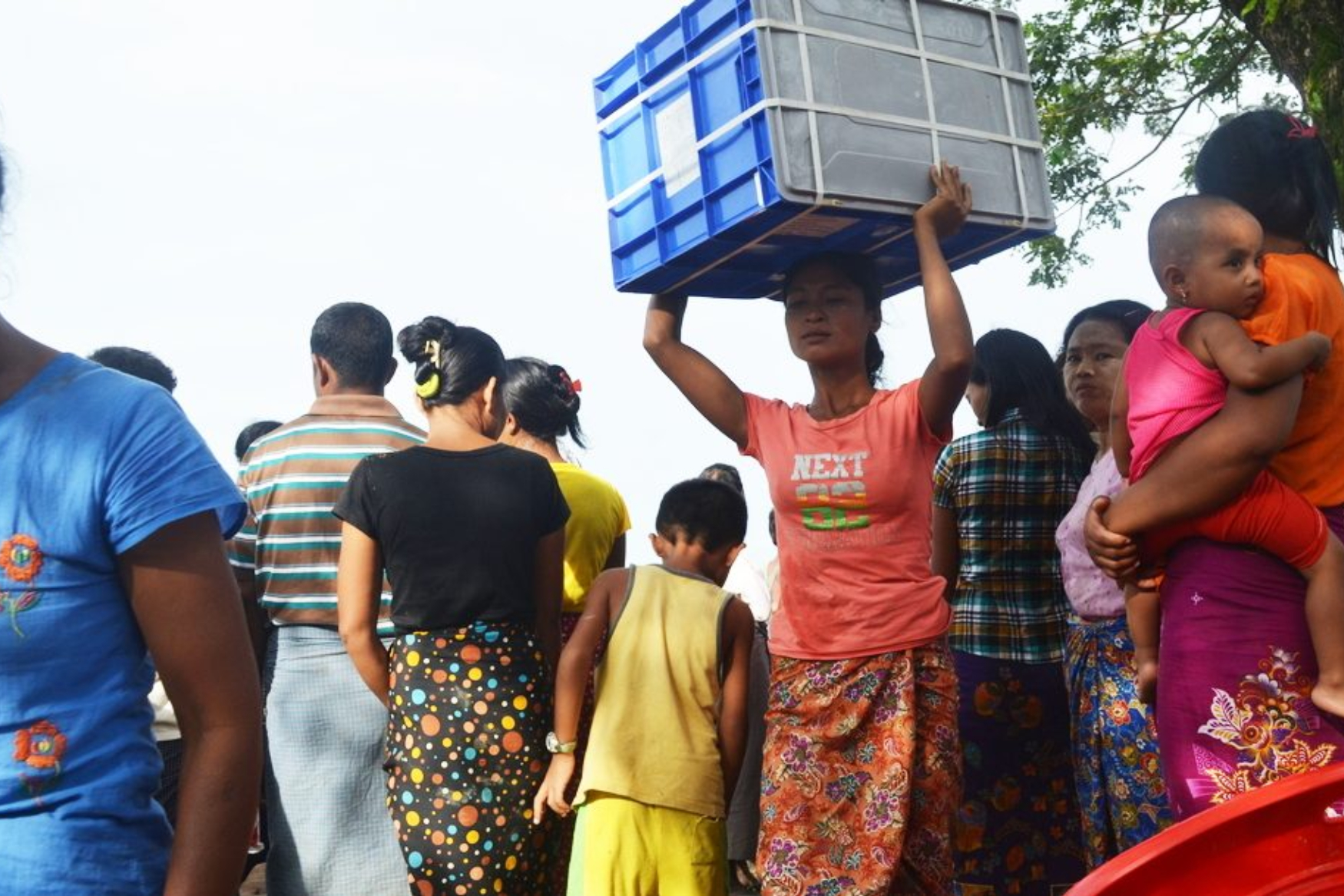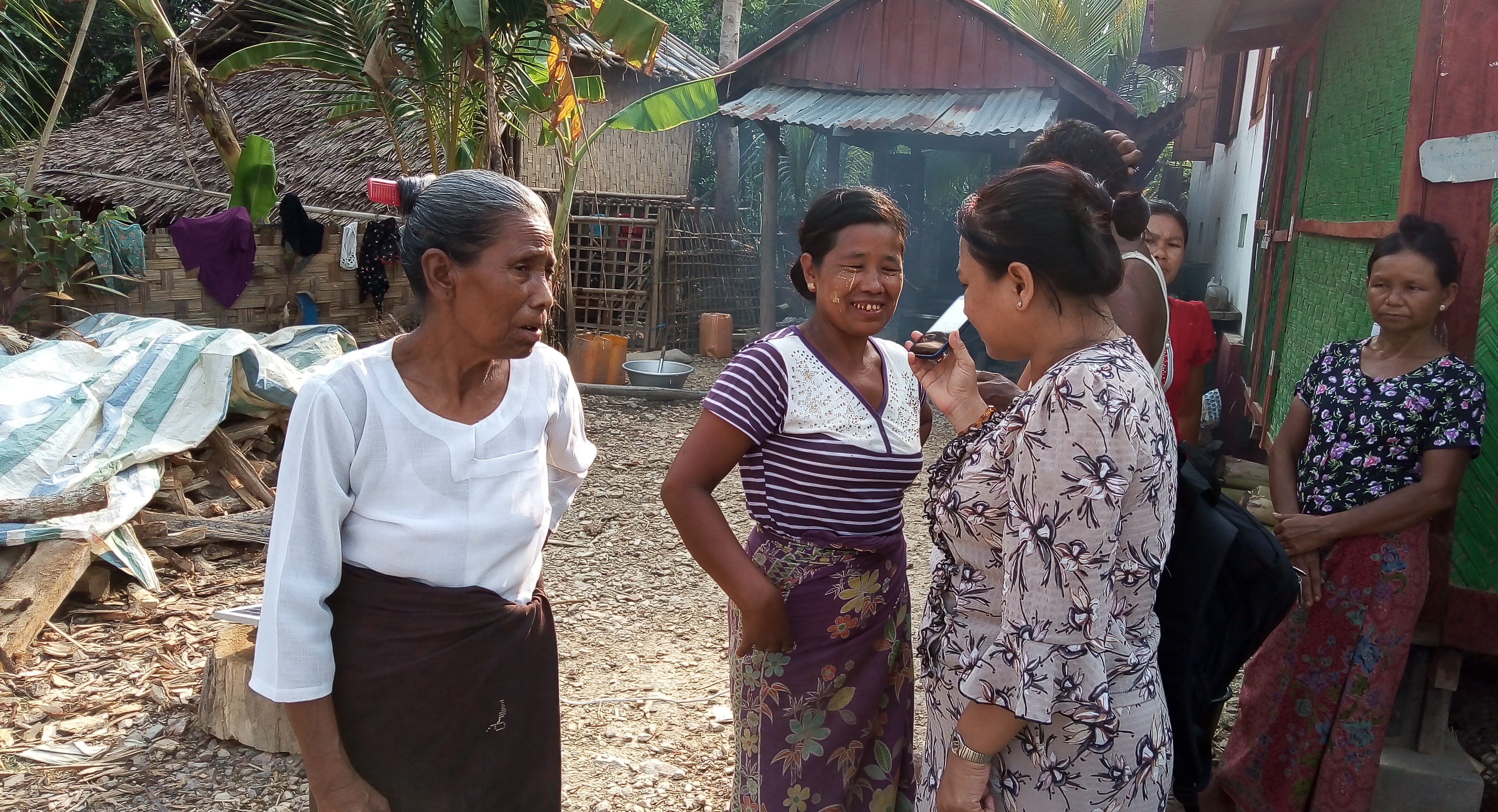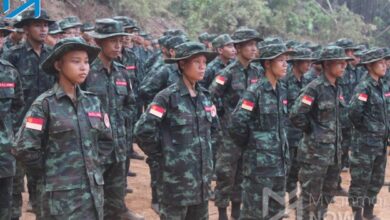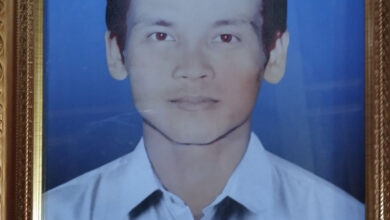
In 2020, the “war” on COVID-19 was declared and is now being fought across the world. But people in Rakhine and Chin states in Myanmar have already been affected by conflict between the Arakan Army (AA) and the Tatmadaw, the Myanmar military, for years. Since the conflict started in December 2018, there have been approximately 157,000 people displaced and hundreds of civilian deaths. As the world awakened to the seriousness of the pandemic in April, the fighting also intensified: 4,000 people were uprooted from their homes in Minbya over two days, while smaller-scale displacements continued in other townships. The displacement rate in Rakhine and Chin states has escalated by more than 50 per cent since January. The affected are already on the frontline of an actual war, with the “war” on COVID-19 about to hit them too.
People in conflict areas are doubly jeopardised when the threat of COVID-19 intersects with war. While the world is following updates on how to stay safe and prevent the spread of infection, people in conflict affected areas of Rakhine are ignorant of life-saving information due to internet shutdowns and electricity blackouts. The lack of proper information make them feel less worried about COVID-19. For them, the virus seems less deadly than conflict and less frightening than malnutrition. They live in isolation from the rest of the world, experiencing a different form of social distancing.
The lives of internally displaced people in makeshift camps, constituted by overcrowded tents and ad-hoc shelters, are far removed from the discourse of physical distancing and hand washing. In places like Ponnagyun, water sources are almost two miles away. Afraid of artillery shells, people are reluctant to fetch water anyway. They struggle to survive with shortages of drinking water, bathe irregularly and cannot afford frequent hand washing. A girl from Myebon was so desperate for water that she told a local women’s organisation, “We all will die from thirst before the virus kills us”.
When Myanmar’s first case of COVID-19 was confirmed on 23 March, people in Rakhine state were fleeing as the fighting intensified and their homes were burned down. Although “stay home, save lives” has become the global mantra to combat the spread of COVID-19, staying home is not an option for people in conflict affected areas. Many have become homeless, without security, safety and protection. If people in conflict zones are not in positions to follow the recommended health precautions, how should the Myanmar government control the spread of COVID-19 in Rakhine?
Global evidence shows that COVID-19 affects women and men differently. While men are more likely to die from the virus, women are more likely to be impacted by COVID-19 since women make up the majority of frontline healthcare providers, unpaid caregivers, and informal sector and service workers. They also disproportionately suffer from the virus’ indirect fallout, including increasing gender-based violence and food and medicine shortages. All of these impacts are intensified in contexts of conflict and emergency where there is weakened social cohesion and limited institutional capacity. While the Myanmar government has announced a series of pandemic response policies under the COVID-19 Economic Relief Plan (CERP), it needs to allocate specific resources and measures to address the particular risks, vulnerabilities and challenges faced by women and girls in conflict zones.
Women in conflict zones
The experience of conflict alone has been devastating for women in Rakhine, often primary caregivers whose lives were previously confined to their homes and domestic chores. Having a home is central to these women’s capacity to exercise power in their everyday lives. Their authority is associated with their social status/roles as home makers, primary caregivers, social activity creators, and income generators (from small businesses in their homes). Through their decisions on food and provision of care, and the allocation of their time and resources, they influence and contribute to the health, security and wellbeing of their family and community. Losing their homes means they have lost a sense of control over their normal everyday routines, and in turn their confidence, self-esteem and ability to integrate in society. Many are overwhelmed by the pain of loss and do not know how to handle their grief.
In some situations, women have lost the male family members who were guarantors of their physical security and mobility. Single mothers, widows and young girls have to shelter together with unrelated men and boys, often in monasteries or tents without secure closures, leaving them at increased risk of sexual and gender-based violence. Living with strangers makes them feel unsafe. They are terrified when they have to resort to open defecation in some situations. “We avoid taking baths and are afraid to go to the toilet at night,” said women from the camp in Minbya.
The situation is worsened for elderly women and women with disabilities as toilets and bath facilities are often both far away and rarely adapted for people with different needs. Crowded spaces also limit their mobility. The impacts on pregnant women are also particularly severe. “Breastfeeding my baby in front of many people at the camp is challenging for me and I feel like hell when he goes hungry and crying,” said a young mother in a camp in Mrauk U. They go without medical checkups while on the run from conflict and lack enough food and clean water.

While the presence of soldiers should ideally act as a stabilising force, the heightened securitisation of Rakhine has further exacerbated women’s lives. The “war” on COVID-19 has meant closures of borders worldwide and scaled up security on the streets across villages in Myanmar. But the simultaneous conflict situation means even severer confinement measures in Rakhine. Normal cultural controls over behavior tend to be weakened during times of conflict and violence becomes more prevalent. Humanitarian help has been restricted in the name of security and aid workers are being prevented from delivering life-saving food and medical supplies.
The aggressive enforcement of security measures without accountability strains already deteriorating trust towards the authorities, exaggerating feelings of insecurity. Women are afraid to look for food and fetch water due to fears of sexual harassment or arbitrary arrest at military checkpoints, or being caught up in unexpected armed clashes. Women I spoke too were extremely terrified after hearing the case of a young school teacher from Rathedaung who lost a leg from a bomb attack by a soldier in May after denying his advances.
Bringing gender into Myanmar’s COVID-19 response
Although there are no reported cases of COVID-19 in Rakhine state as of 10 May, the rapid spread of the virus is “a ticking time bomb”. The Myanmar people are already suffering from the pandemic’s huge socio-economic impact and hope their concerns will be eased by the government’s COVID-19 Economic Relief Plan (CERP). The CERP covers a wide range of economic stimulus policies, actions to strengthen the healthcare system, and social protection measures such as food rations, cash transfers and labour-intensive community infrastructure projects targeting vulnerable households (including returning migrants, small holder farmers and internally displaced people).
While many of the policies under CERP are laudable, the ongoing civil war is a major obstacle in the fight against COVID-19 in Rakhine state, particularly as it pertains to women. In such a heavily securitised region, women’s autonomy over their health and bodies is undercut by social and cultural norms in Myanmar that uphold feminine ideals of politeness and gentility. Contexts of conflict also strengthen discriminatory norms that valorise the superiority of men and present women as defenseless and inferior. If a woman needs to see the doctor, she is unlikely to be able to go to a health centre on her own, due to considerations of modesty or her inability to travel unaccompanied—especially if she has to pass through military checkpoints. As it is men who are mostly managing shelters, women find it difficult to speak up about hygiene and health matters.
Halting open conflict is paramount to ensuring safe and humane conditions for all people and addressing the particular needs and vulnerabilities of women. Declaring an immediate ceasefire should be the top priority for the Myanmar government, so it can channel all efforts towards fighting the pandemic and facilitate a joint fight against the virus.
While government peace negotiators invited the AA to join a united front against COVID-19, areas controlled by the AA—including Rakhine state—were excluded from a unilateral ceasefire declared by the military in May to allow the country to concentrate on controlling the pandemic. The AA was excluded because the government declared the organisation a terrorist group the day that Myanmar reported its first COVID-19 case. Three ethnic armed groups including AA issued a joint statement on 10 May petitioning the government not to exclude Rakhine state from the unilateral ceasefire.
The government’s second priority needs to be ensuring that the implementation of policy actions under the CERP reaches all people, including vulnerable women in conflict affected Rakhine State. COVID-19 responses in Rakhine must give local conflict dynamics due attention and design for conditions where mistrust prevails between the government, citizens and armed groups. Engaging local civil society groups and women organisations is key to improving policy implementation, designing interventions, and promoting coordination and inclusiveness. While the government has made reassurances that the CERP will leave no-one behind, it needs to allocate specific policy measures and resources to address the particular risks, vulnerabilities and challenges faced by women and girls in conflict zones.
If designed right, the Myanmar government’s COVID-19 response can go beyond providing protections from the virus, to contribute to peace in the region and strengthen the resilience of women who have faced years of conflict.
This article originally appeared on the New Mandala website. (https://www.newmandala.org)
![Resistance fighters holding heavy weapons ammunition in central Myanmar. (Photo: Freedom Revolution Force [FRF])](https://myanmar-now.org/en/wp-content/uploads/sites/5/2024/04/438869056_443267851680128_1706386881626943924_n-390x220.jpeg)


